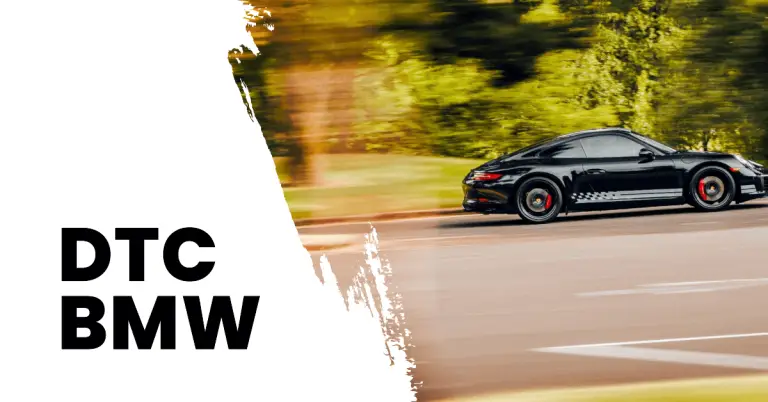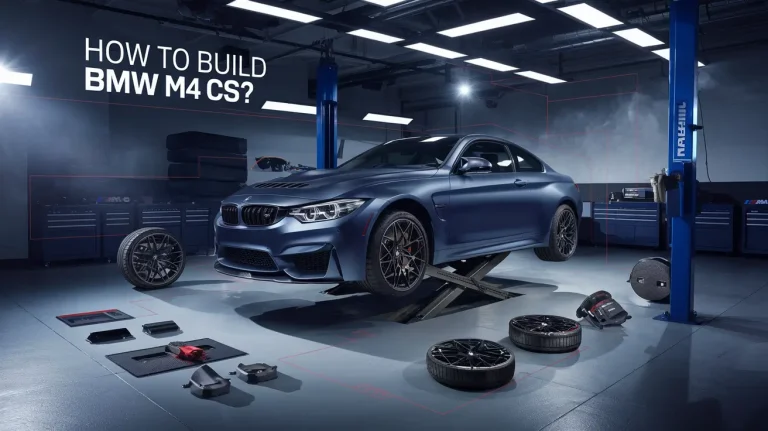What Does BMW CSL Actually Stand For?
BMW is known for producing some of the most iconic performance cars of all time. Models like the M3, M5, and M6 have cemented the brand’s reputation for blending luxury and power. But there’s an even more exclusive designation that BMW reserves for its most special track-focused creations – CSL.
So what do the three letters CSL stand for, and what makes these models so unique in BMW’s storied history? Read on to learn the meaning behind CSL, how it originated, and why these lightweight BMW racers are so coveted today.
The Origins of BMW’s CSL Models
CSL first appeared on BMW’s 1973 3.0CSL, an homologation special built so BMW could compete in the European Touring Car Championship. CSL stands for “Competition Sport Lightweight” or “Coupé Sport Leichtbau” in German.
Right from the start, the designation was meant to indicate lighter, faster, more competition-oriented versions of BMW’s production cars. The E9-based 3.0CSL, nicknamed the “Batmobile” for its big wings and body kit, certainly lived up to that aspiration.
BMW went on to use CSL only two more times over the next five decades – for the E46 M3 CSL in 2003 and the 2022 M4 CSL 50th Anniversary model. The rarity of the name adds to the cachet and exclusivity of BMW’s CSL variants.
The Iconic BMW 3.0 CSL “Batmobile”
The car that started it all, the 1973 3.0 CSL established the formula for subsequent CSL models. Under the hood was an upgraded 3.2 liter straight-6 making 206 hp, allowing for 0-60 mph acceleration in under 7 seconds – very quick for the era.
With racing bodywork like the huge front air dam and rear wing, the 3.0 CSL weighed just 1270 kg/2799 lbs. Only the last 167 examples built came with the full “Batmobile” aerodynamic kit that gave the CSL its nickname.
In 1973, the 3.0 CSL won the European Touring Car Championship, followed by a class win at Le Mans the same year. This success cemented BMW’s racing reputation. In total, just 1265 3.0 CSLs were produced from 1973-1975, with only 500 built in right-hand drive for export markets.
Today, the desirable and rare 3.0 CSL can trade hands for over £120,000, a testament to its legendary status. It was the first BMW to wear the Motorsport tri-color stripes, kicking off a long tradition.
Later CSL Models Through the Years
After the E9, the next model to get the CSL treatment was the E46 M3. The 2003 M3 CSL turned up the wick with a 333 hp version of the 3.2L I6, paired with a stiffer suspension and weight reduction to 1385 kg. With a Production run of just 1400 units, the M3 CSL remains highly sought after today.
Jumping to 2022, BMW launched the M4 CSL in celebration of the M division’s 50th anniversary. With 550 hp, aggressive aerodynamics and weight savings of 100 kg over regular M4 models, the M4 CSL set a Nurburgring lap record for production cars in its class. BMW produced only 1000 examples, keeping the CSL exclusive.
Over the years, BMW has toyed with applying the CSL badge to even rarer concepts that never saw production. This includes an E46 M3 CSL with a V8 from the E39 M5, and CSL versions of the V10-powered E60 M5 and E63 M6. These prototypes reinforce the racing heritage behind the CSL name.
What Makes a CSL Special at BMW?
So what exactly differentiates CSL models from other high-performance M cars in BMW’s range? Here are the key ingredients of BMW’s CSL formula:
- Lightweight Construction: Generous use of carbon fiber, aluminum and magnesium to pare down weight. The M4 CSL weighs 100 kg less than a standard M4, for instance. This aids acceleration, braking and handling.
- More Power: Increased displacement and tuning pushes output above the standard models. The E46 M3 CSL made 20 hp more than a regular M3.
- Competition Focus: Stiffer suspensions, aerodynamic enhancements and other chassis tweaks make CSLs more track-oriented.
- Exclusivity: Limited production numbers ranging from 1000-1400 units ensures CSLs remain rare.
By combining these aspects, BMW M’s engineers create the ultimate enthusiast’s machines whenever they resurrect the legendary CSL badge.
Why the CSL Name Changed Slightly
Observant BMW fans may have noticed the “Coupe” part of the CSL name has disappeared in recent models. That’s because more recent CSL models like the E46 M3 CSL and latest M4 CSL are based on sedans, not coupes.
To preserve the continuity while reflecting the new body styles, BMW has tweaked the name to stand for “Competition Sport Lightweight” rather than “Coupe Sport Lightweight”. The meaning remains exactly the same, just adapted to modern BMW’s range.
CSL’s Connection to BMW’s Motorsports Arm
It’s no coincidence that the release of the first 3.0 CSL aligned with the founding of BMW’s motorsports division, BMW M. The success of the “Batmobile” CSL directly led to the formation of BMW’s racing department in 1972.
But BMW partnered with longtime racing outfit Alpina on development of the early 3.0 CSLs. In fact, Alpina was already racing an E9 BMW 2800CS in 1970, a year before the CSL was born. The original CSL prototypes were engineered and assembled by Alpina, showing the close link.
So while the 3.0 CSL started the M performance sub-brand, Alpina’s racing experience was equally important. The lightweight E9 racers were the perfect proving ground for what would become BMW M.
The Legacy and Influence of CSL
The principles of the pioneering 3.0 CSL influenced BMW’s approach to performance cars to this day. CSL set the blueprint for vehicles that push BMW’s engineering and design limits on the racetrack, rather than just being luxury cruisers.
For BMW faithful, the CSL badge holds almost mythic status. It represents the pinnacle of BMW performance – exotic materials, racing pedigree, flawless driving dynamics and limited availability. Values for pristine CSLs have steadily climbed for years, making them blue-chip collectibles.
In the future, it’s likely BMW will continue producing occasional CSL models as technology allows for greater power and light-weighting. The name carries too much cachet among enthusiasts to retire forever. An electrified CSL model perhaps? Only time will tell.
Conclusion
In summary, BMW’s CSL designation indicates the brand’s most special performance models optimized for the racetrack. Standing for “Competition Sport Lightweight”, CSLs leverage weight reduction, added power, sharper suspension and race-bred aerodynamics compared to standard BMWs.
The history of CSL can be traced back to the 3.0 CSL “Batmobile” which pioneered the formula in 1973. Its success directly led to the founding of BMW’s M performance division. Other legendary CSL models include the E46 M3 CSL and latest M4 CSL 50th Anniversary Edition.
With such an evocative name tied to BMW’s motorsports heritage, the CSL badge will likely continue to grace limited edition BMWs far into the future. For BMW enthusiasts, they represent the ultimate expression of the brand’s engineering capabilities and racing spirit.







